The best retro game consoles
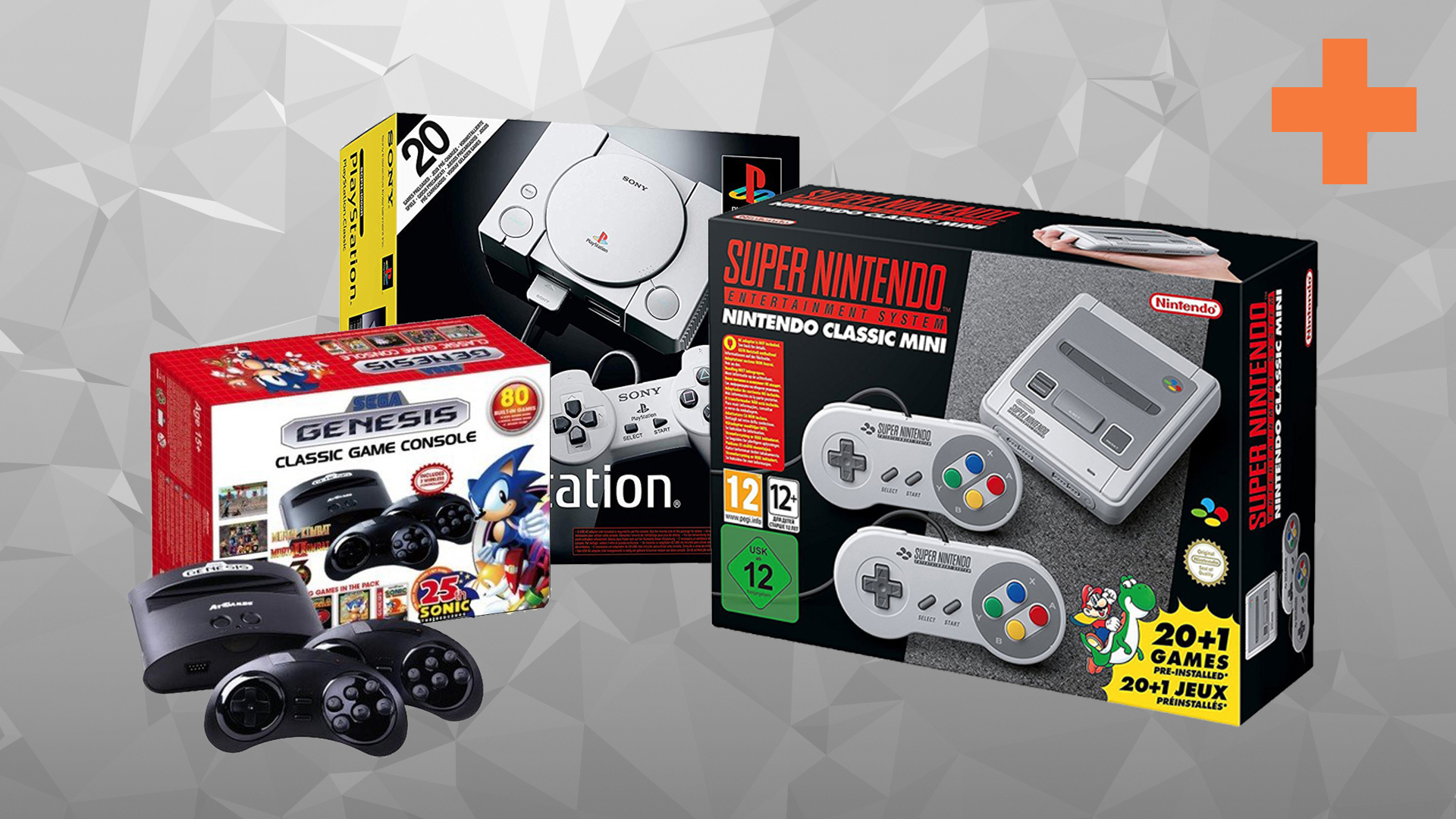
If you're feeling nostalgic or are in need of a pick-me-up, you can't go wrong with the best retro game consoles. They're as good as time machines; regardless of whether you played Nintendo, PlayStation, SEGA, or something else entirely, these miniature remakes haul you back to the good old days. Most of the big names from the 1980s and 1990s are represented here, including the brilliant SEGA Genesis Mini and PlayStation Classic. More importantly, each one has a port to accommodate the best HDMI for gaming. That means you can hook them up to the best gaming TVs via HDMI cable without any trouble.
The only downside would be the sheer volume of choice, and not all of these resurrected consoles were created equal. To help point you in the right direction, our team have put together a list of the best retro game consoles that every fan needs in their collection. We've also gone looking for deals, discounts, and reductions to save you cash along the way. However, the one thing to keep in mind before you break out your wallet is this: check which games are included on your console of choice before buying it. Most retro consoles only have 20-30 titles on them, so there's a good chance your favorites have been left by the wayside. As such, be sure to do your research to avoid disappointment!
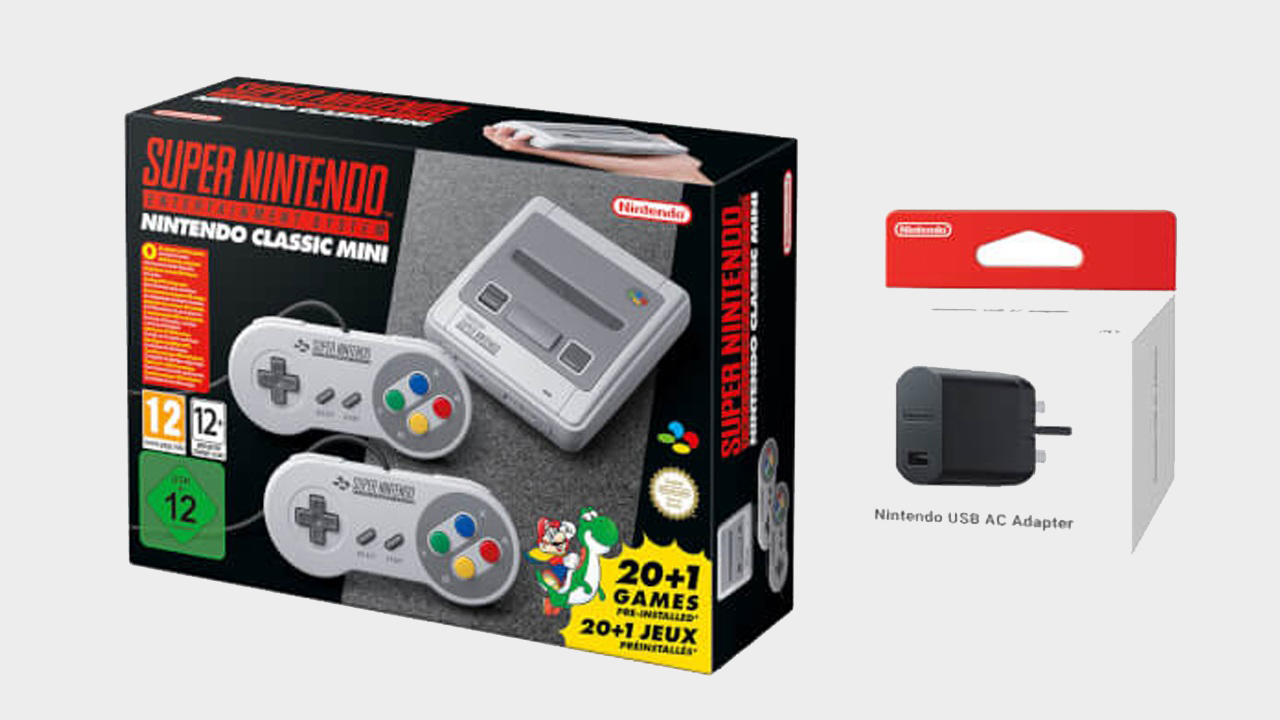
Super NES Classic
Specifications
Reasons to buy
Reasons to avoid
With the success of and overwhelming demand for the NES Mini Classic, a 16-bit follow up was virtually guaranteed. Once again, Nintendo knocked it out of the park, providing a fantastic library of essential games inside a faithful, adorable miniature replica of the original SNES. Unfortunately, they didn’t necessarily iron out all the issues that the original mini was saddled with, however, and they certainly didn’t adjust for scarcity at launch, though once again another production run has mitigated some of the headaches of finding a SNES Mini Classic of your own.
The games library, while slimmer than its predecessors at only 21 games, represents an amazing array of the best of their era, games that changed gaming in fundamental ways or established tropes and design principles that continue to echo in game development today. And these aren’t museum pieces; games like The Legend of Zelda: A Link to the Past, Super Punch-Out!, and Super Mario World are still as playable and engaging today as they were in the heyday of the SNES, and you could easily lose tens or hundreds of hours thoroughly putting the entire library through its paces. Matched with a suite of display options ranging from fuzzy CRT emulation to crisp HD output, rewind and suspend options, and a bucketful of fun Nintendo Easter eggs, and the SNES Mini Classic is an incredibly easy sell. Though the cord length issue persists - it’s longer, but still nowhere near long enough for living room setups - and some convenience issues with the hardware haven’t been addressed, it’s hard to imagine a more slickly packaged, densely concentrated dose of sweet nostalgia.
Best for... Anyone with even a passing interest in Nintendo classics
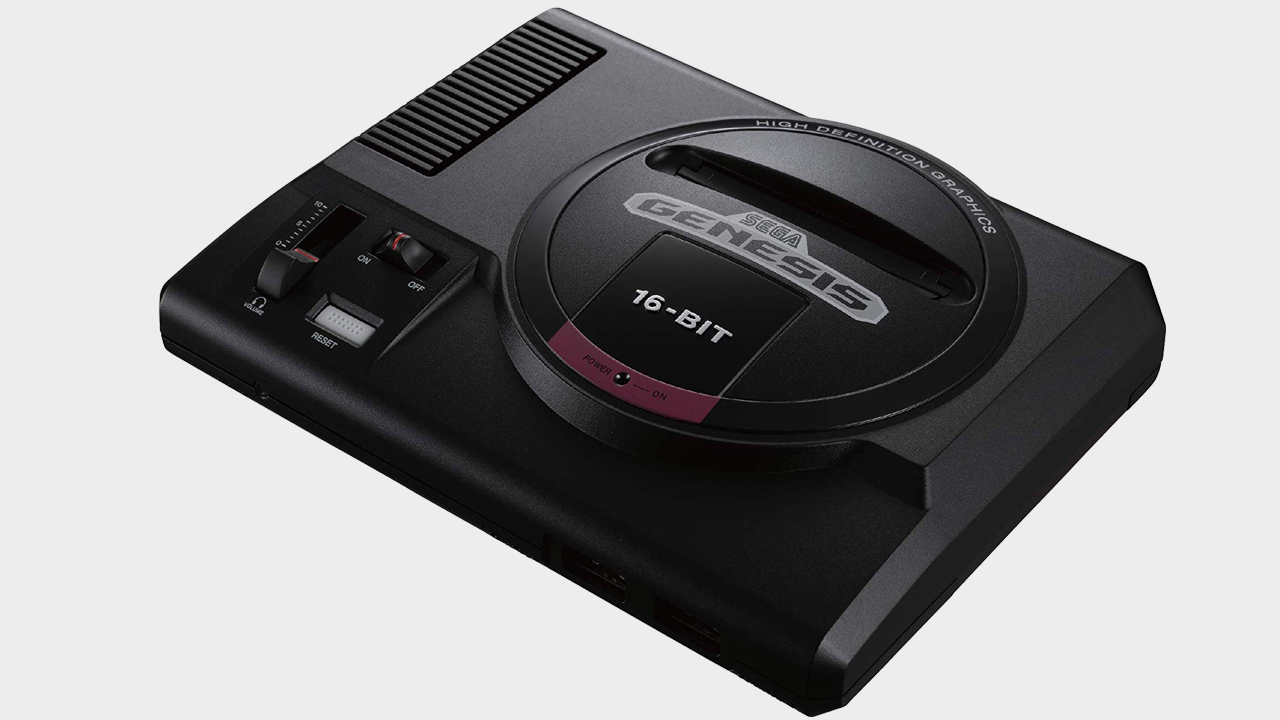
SEGA Genesis / Mega Drive Mini
Specifications
Reasons to buy
Reasons to avoid
If you're a SEGA fan from the 90s, you're in luck - the SEGA Genesis Mini (or Mega Drive if you're in the UK) is downright superb. From an adorably dinky console with a cartridge slot you can actually open for 'blowing away dust' to its authentic packaging, this is a system that excels at the little things. With 42 all-time classic games (and bios on the significance of each one), the Genesis Mini also offers better value for money than most. It even has original menu music by the 16-bit era legend Yuzo Koshiro; this was created using authentic tools of the day. Cool, right?
Best for... Any SEGA fan wanting to relive the glory days.
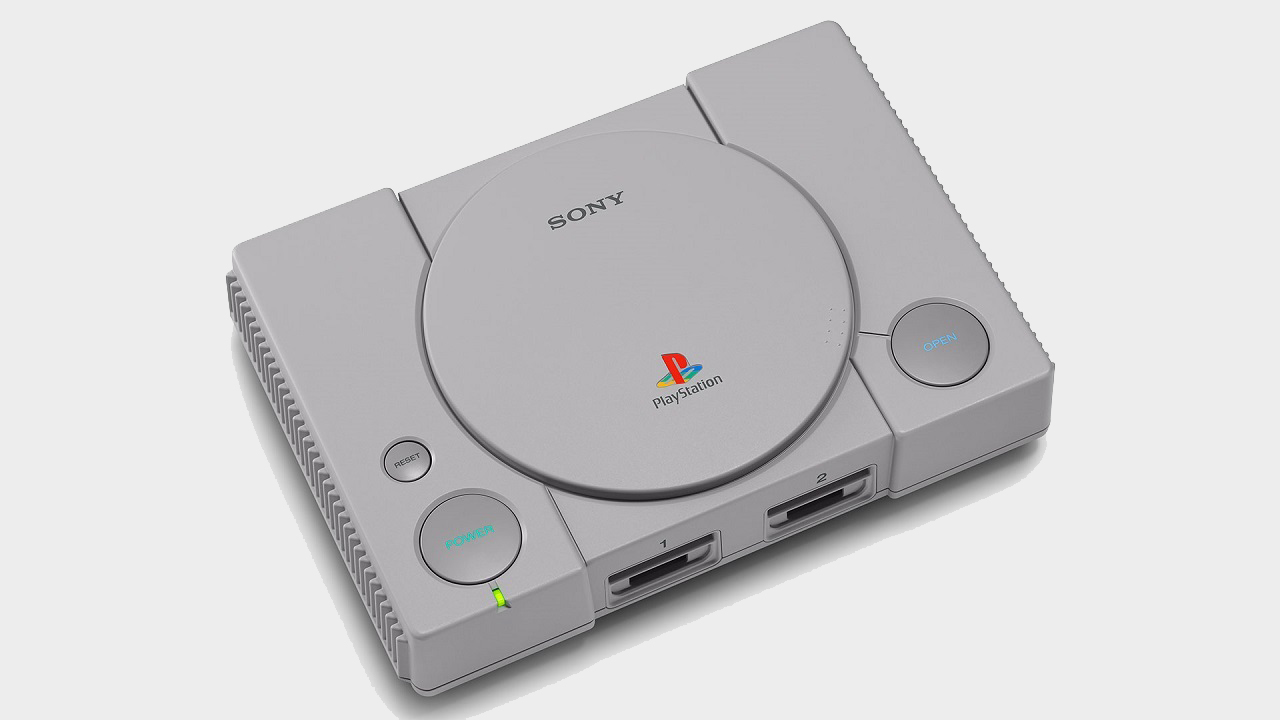
PlayStation Classic
Specifications
Reasons to buy
Reasons to avoid
The original PlayStation holds an interesting spot in the landscape of the evolution of gaming. It was amongst the first (and was certainly the most popular) console to truly push the 3D frontier, expanding beyond the flat 2D planes of gaming's primitive origins and launching a revolution that would define the future of the medium. For some, it's iconic, and rightfully so: games like Final Fantasy VII and Resident Evil (both included on the PlayStation Classic) are some of the most revered titles in gaming, games that defined studios and franchises for years to come. And the Classic packs a great subsection of these games into its adorable, faithful little frame.
Unfortunately, the library feels a little truncated at only 20 titles, and some high profile exclusions like Castlevania: Symphony of the Night or Grand Turismo do rankle a bit. But what Sony has done an excellent job is picking a slate of titles that is broad enough to represent one of the most diverse libraries in console history, from JRPGs like Wild Arms and the aforementioned Final Fantasy VII, to classic platformers like Rayman and the quirky Oddworld: Abe's Oddysee, to fascinating museum pieces like the original Grand Theft Auto. The whole package is a great nostalgia trip not only for anyone looking to relive the mid-90s but anyone who's played the endless flood of sequels to these games and wonders where those series originated.
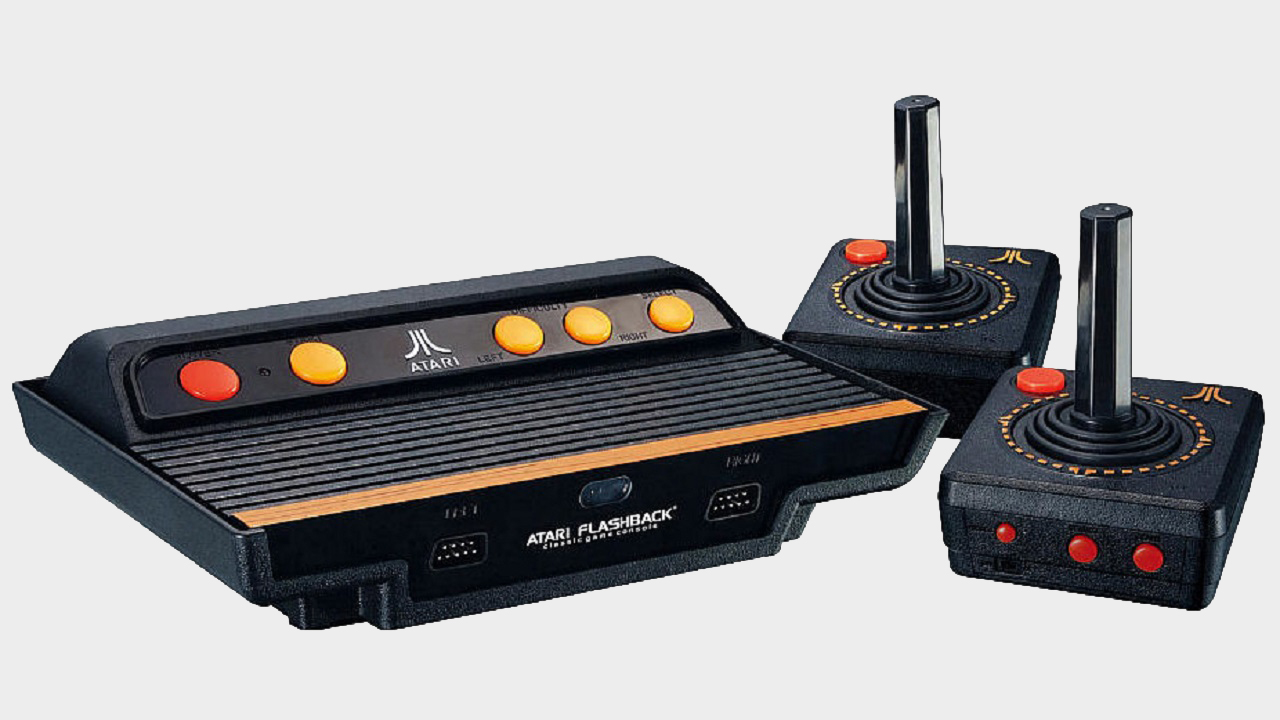
Atari Flashback 8 Gold Deluxe
Specifications
Reasons to buy
Reasons to avoid
While AtGames’ Sega Genesis console is an abomination, its Atari Flashback line of machines are well made and offer an exhaustively detailed option for revisiting the game console grandpappy’s library. 120 games total come pre-installed in the Flashback 8, including most of the Atari-published essentials like Adventure, Yar’s Revenge and Swordquest. While they are emulated, they do run properly. While it’s MSRP is a bit pricey, the Flashback 8 makes up for its relatively high cost by also including great controller options, including two wireless joysticks and two paddles for paddle-specific games like Warlords. It also offers proper 720p HDMI output and pause, save, and rewind functionality.
The Flashback 8 takes the solid foundation that previous iterations had established, and builds on it with some really nice quality of life features and a better library of games. Perhaps most importantly, they corrected the critical oversight of omitting Atari classics like Pitfall, one of the original killer apps.
Best for... The Atari 2600 nostalgist.
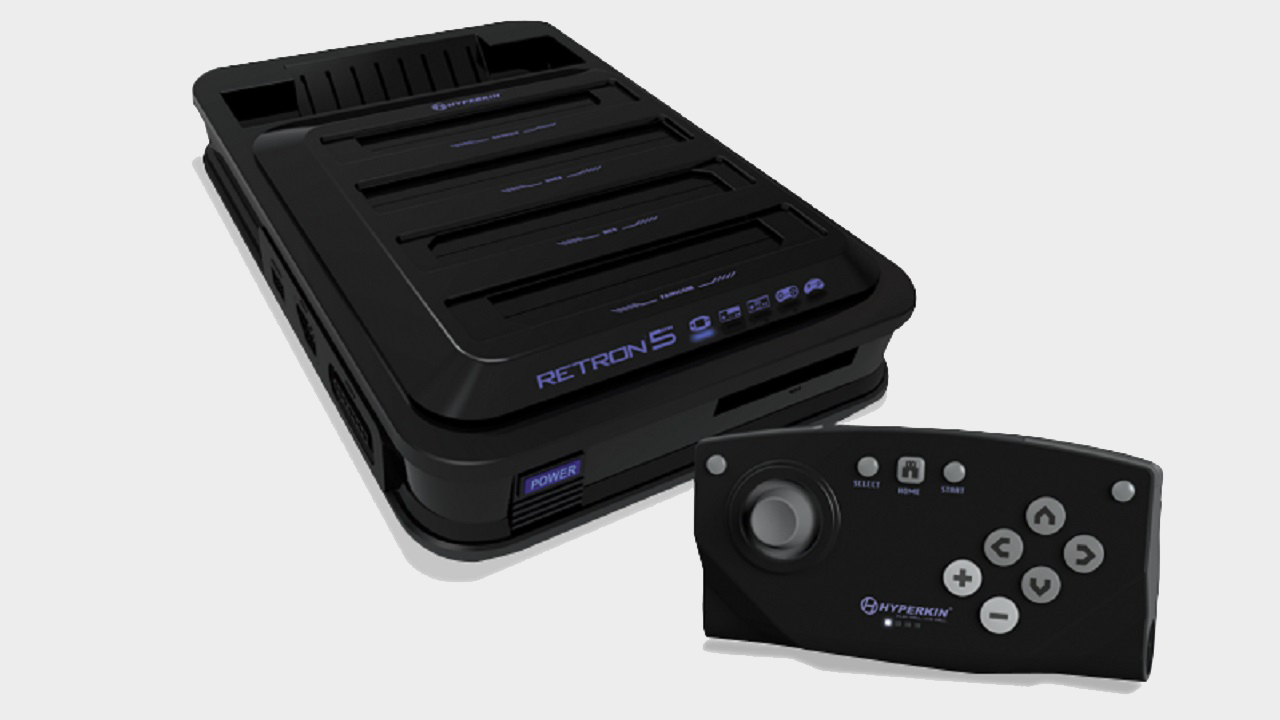
Retron 5
Specifications
Reasons to buy
Reasons to avoid
For the budding cartridge collector - the ’80s and ‘90s collecting market are at an all time peak right now, so get in there before everything vanishes - the Retron 5 offers a lot of bang for the buck.
The Retron 5 is an Android-based machine with its own operating system that dumps the game on your Sega Genesis or NES cartridge (the ROM if you prefer) and plays it through an emulator. Output in up to 1080p on an HDTV, the result is a game that looks and plays close to how it would on original hardware while also supporting emulator functions like save states or cheat codes. It doesn’t match the quality of an actual Super Nintendo running on a high quality CRT television or pumped through a video processor like the XRGB, but it’s a significant improvement over emulated Virtual Console releases on Nintendo Wii and Wii U. Plus: you can use your old controllers! Though you really have to as the Retron 5’s included controller is arguably the most uncomfortable game controller ever made.
There are two other significant drawbacks to the Retron 5. First is the quality of the machine itself: the plastic is light, flimsy and picks up blemishes easily whether it’s the grey or black model. More problematic is the legality of the emulation technology running in the machine. That it emulates old machines isn’t the issue. It’s that the Retron 5 uses emulators developed outside of the company Hyperkin, namely SNES9x Next and Genesis Plus GX, that are explicitly not for commercial use. As Hyperkin sells the Retron 5 for profit but uses software filed under a non-commercial license, it exists in a troublesome legal and ethical grey area.
Best for... Playing a wide range of vintage game cartridges on a budget.
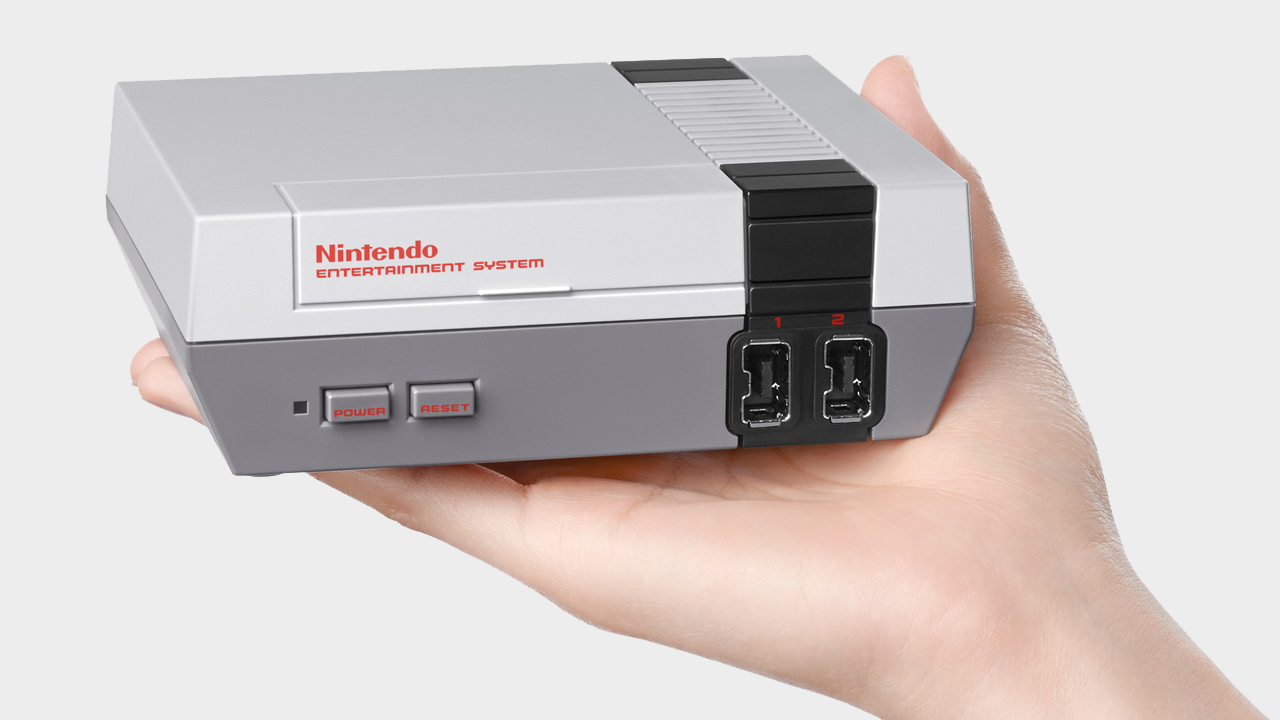
NES Classic
Specifications
Reasons to buy
Reasons to avoid
The NES Classic Mini seemed like a perfect product for Nintendo nostalgists when it was first announced. The slick presentation of the hardware, an adorable little NES even non-game fans could love, combined with a list of games that was a whirlwind tour of 80s essentials. All of those great things are great in practice too! The NES Classic is a lovely machine, if extremely challenging to find around launch, but a new manufacturing run has made them much easier to find for eager collectors and casual fans alike.
Legally running games is a sticking point with the NES Classic Mini. One of the major drawbacks of the machine is that it only has the 30 included games preloaded in. That’s nice for someone who only wants Punch-Out and Metroid, but it’s a shame that the limited selection of titles includes questionable choices like Ice Climbers. Not being able to purchase and download additional games from Nintendo’s eShop stings, doubly so since fans have since discovered how easy it is to load the console with hundreds of NES games with just a simple USB stick. Yes, if you have the ability to rip ROMs from your old NES carts, there are ways—which we won’t share—to very easily get them running on an NES Classic Mini which of course means illegally pirated ROMs run just as well.
Best for... Hardcore Nintendo collectors, casual Nintendo tourists, and intrepid hackers.
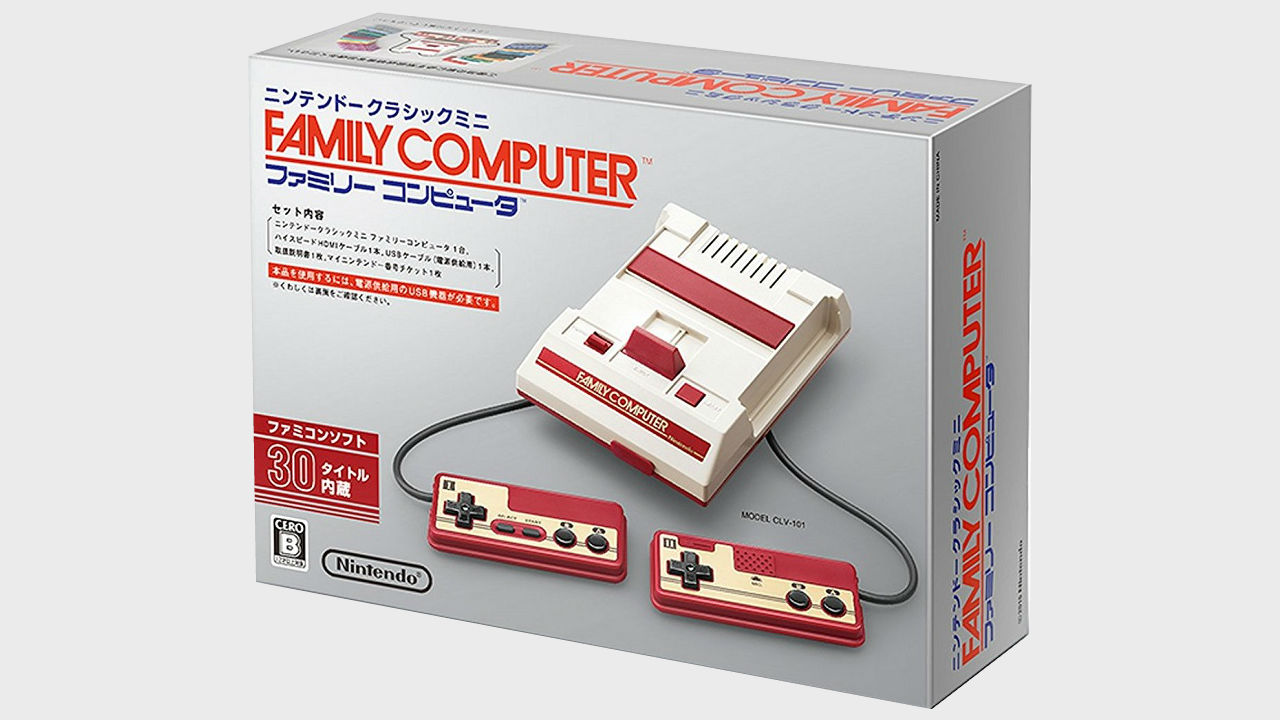
Nintendo Classic Mini Family Computer
Specifications
Reasons to buy
Reasons to avoid
For the retro collector who has everything, or for the Japanese culture enthusiast in your life, Nintendo's Famicom Classic is a rare and delightful gem. It shares a level of build quality (and adorability) with its NES counterpart, but comes with a couple of cult favorites that the US model missed. Filling a couple of obvious holes are River City Ransom and Mario Open Golf, but there are also some lesser-known or Japanese exclusive titles that still hold up well, stuff like platformer Atlantis no Nazo or Tecmo's puzzler Solomon's Key. And while the original Final Fantasy is an important piece of history, Final Fantasy III (included on the Famicom) is a better game to actually play in practically every regard.
The best thing about the Famicom Classic, however, has nothing to do with the games library, it's the design. True to its namesake, the Classic is stylish in vivid white and deep maroon, and has a much sleeker and more modern-looking form factor than its boxy grey cousin. There's also space along sides of the console body to slot in the controllers when you're not using them, which is not only really convenient but looks sharp, too. And while the interface and games are all in Japanese, fluency is definitely not required for the vast majority of the included games, and the interface is easy enough to navigate around with a little trial and error (in fact, if you have access to the NES Classic, it's virtually identical). If you're so inclined, it's actually a great way to practice some basic Japanese as text is all displayed in hiragana and katakana (the original Famicom couldn't display kanji).
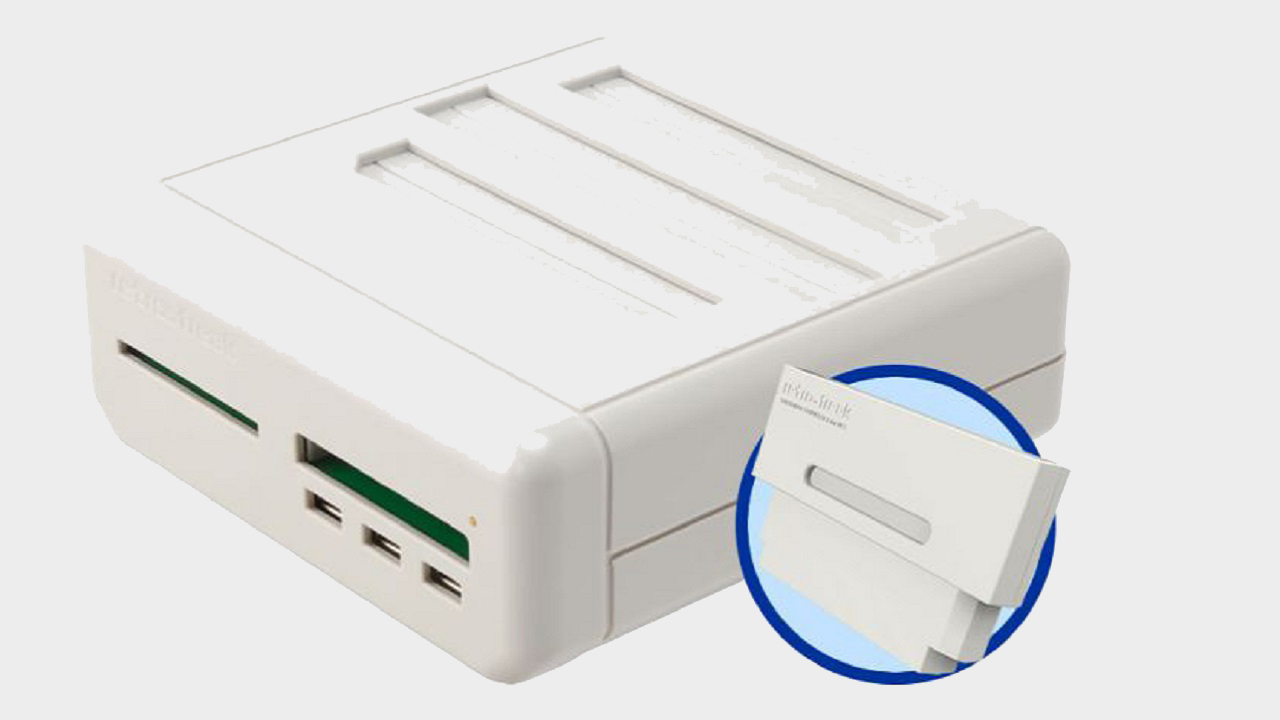
Retro Freak
Specifications
Reasons to buy
Reasons to avoid
More expensive and more complicated to set up than the Retron 5, the Retro Freak is ultimately worth the extra effort: this is a superior machine that offers the same functionality and then some without the same drawbacks. It’s even got a very nice controller, which may not be wireless but is far more comfortable and solidly built. (USB controllers are also supported if you don’t want to spring for the separate adapter that will use your vintage controllers.) In fact that whole package is of a much higher quality than the Retron, with solid plastic that doesn’t feel like it’s going to break the moment you use it. The actual console itself is a small brick that stores games on a MicroSD card. This plugs into a larger adapter that reads classic cartridges and stores the game ROMs on the SD card. Then if you want a clean entertainment center, you can store the cartridge adapter after ripping your games and tuck the base unit away out of sight beneath your TV. Unfortunately for those in the US and Europe with a plethora of NES games, yet another adapter is needed to plug those cartridges in.
The sheer range of other consoles supported elevates Retro Freak. All of the cartridges for NEC’s cultishly adored PC Engine, whether Japanese releases or American TurboGrafx-16 versions, run on the machine. It even supports games for SuperGrafx, PC Engine’s obscure successor, of which only five even exist. Retro Freak is also a special treat for Sega fans. While there are myriad quality options for NES and SNES retro console fans, there are fewer quality options for Sega fans. Options like At Games’ Genesis, which includes a selection of pre-installed games as well as supporting cartridges, is terrible; bad emulation, bad UI, just bad all around. Retro Freak runs Genesis and Mega Drive games incredibly well and an extra adapter ups the Sega love to include the Master System, SG1000 console, and even Sega My Card, the rewritable Sega game cartridge that was only officially in use from 1985 to 1987. That is robust, if inconvenient for the player who wants something they can just plug in and start using.
Best for... The 8- and 16-bit console completist that's comfortable with an emulation machine. And the rare TurboGrafx-16 nerd who doesn't actually have a Turbo-Grafx-16.
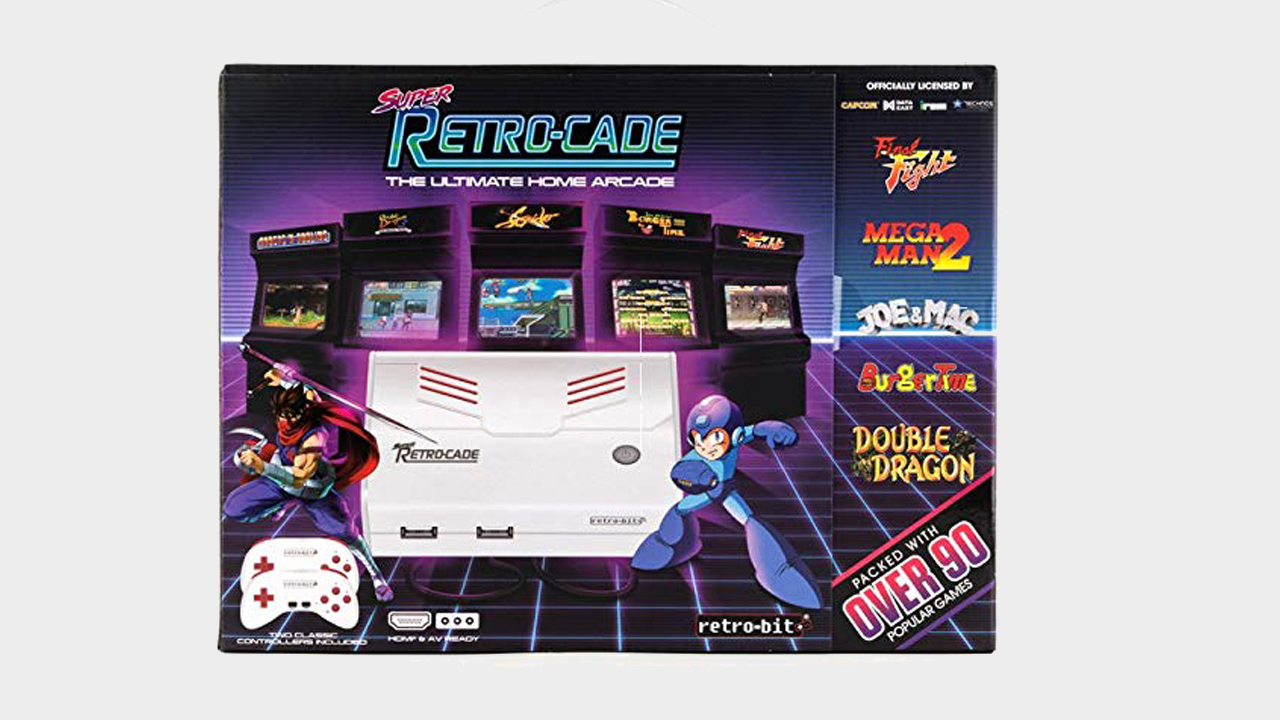
Retro-Bit Super Retro-cade
Specifications
Reasons to buy
Reasons to avoid
Retro-Bit stumbled off the blocks a bit with Generations, a much (and deservedly so) maligned attempt to create a foothold in the retro emulation market. Their follow-up seems to have taken the criticism aimed at Generations fully onboard, however, with marked improvements in the quality of emulation and a much improved library.
The console itself is a combination of slick and bright and boxy and functional, a vivid white shell slashed with bright red that’s shaped like a brick and lacks contours or much other visual flair. The feature set is a similar mesh of design philosophies; 720p video output as well RCA for connecting to older CRTs, two sturdy, no frills controller with nice ten foot cables, and other solid features matched with a deep, flashy library of 90 games that represent a huge, eclectic swath of 8 and 16 bit classic, including some games that have never been available domestically. Alongside classics like Mega Man and Ghosts N’ Goblins are some lesser known but excellent coin-op titles like Side Arms and Wizard Fire. The Retro-cade is a great addition to any retro collection and a convincing argument for Retro-bit staking out a permanent position in the retro console market.
Best for... anyone looking to relive fond arcade memories.
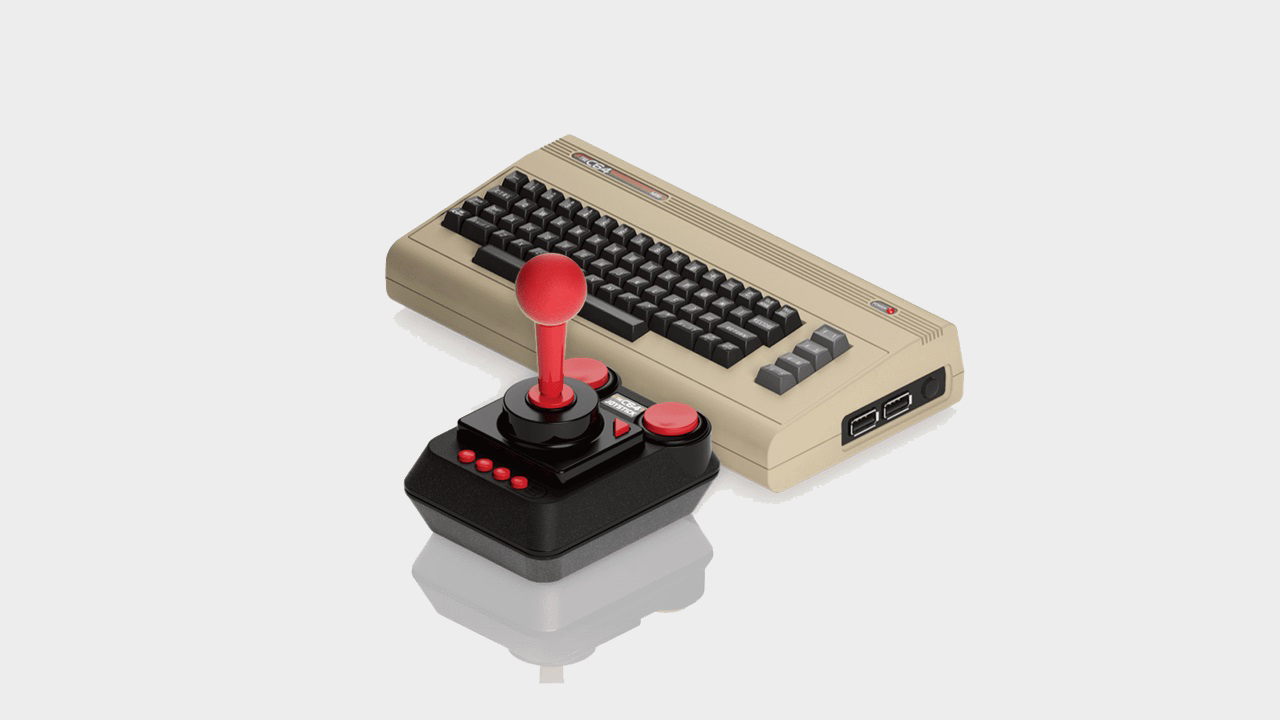
C64 Mini
Specifications
Reasons to buy
Reasons to avoid
If you were a huge fan of the Commodore 64 or feel waves of nostalgia sweeping through your body after a glimpse of that bright red joystick and beige keyboard, the C64 Mini was made specifically for you. While it's a console that comes with some caveats, like a joystick that's extremely stiff and limited and a couple of high profile titles missing from it's otherwise generous catalog (you won't find Wasteland, Skate or Die, or Elite here), it's delightful little shell is packed with retro fun that will transport you back to the era of stained-washed jeans and hair metal.
A surprising number of the 64 included games are still a huge amount of fun to play, especially if you're looking to jump around in a frenetic platformer, or immerse yourself in the deadly, futuristic racing league of Alleykat. While there are a lot of games that fall into similar niches (platformers and scrolling shooters are available in abundance), there are enough distinctive standouts to remind you why the original C64 was the best selling home computer of all time.
Weekly digests, tales from the communities you love, and more

Alan Bradley was once a Hardware Writer for GamesRadar and PC Gamer, specialising in PC hardware. But, Alan is now a freelance journalist. He has bylines at Rolling Stone, Gamasutra, Variety, and more.


